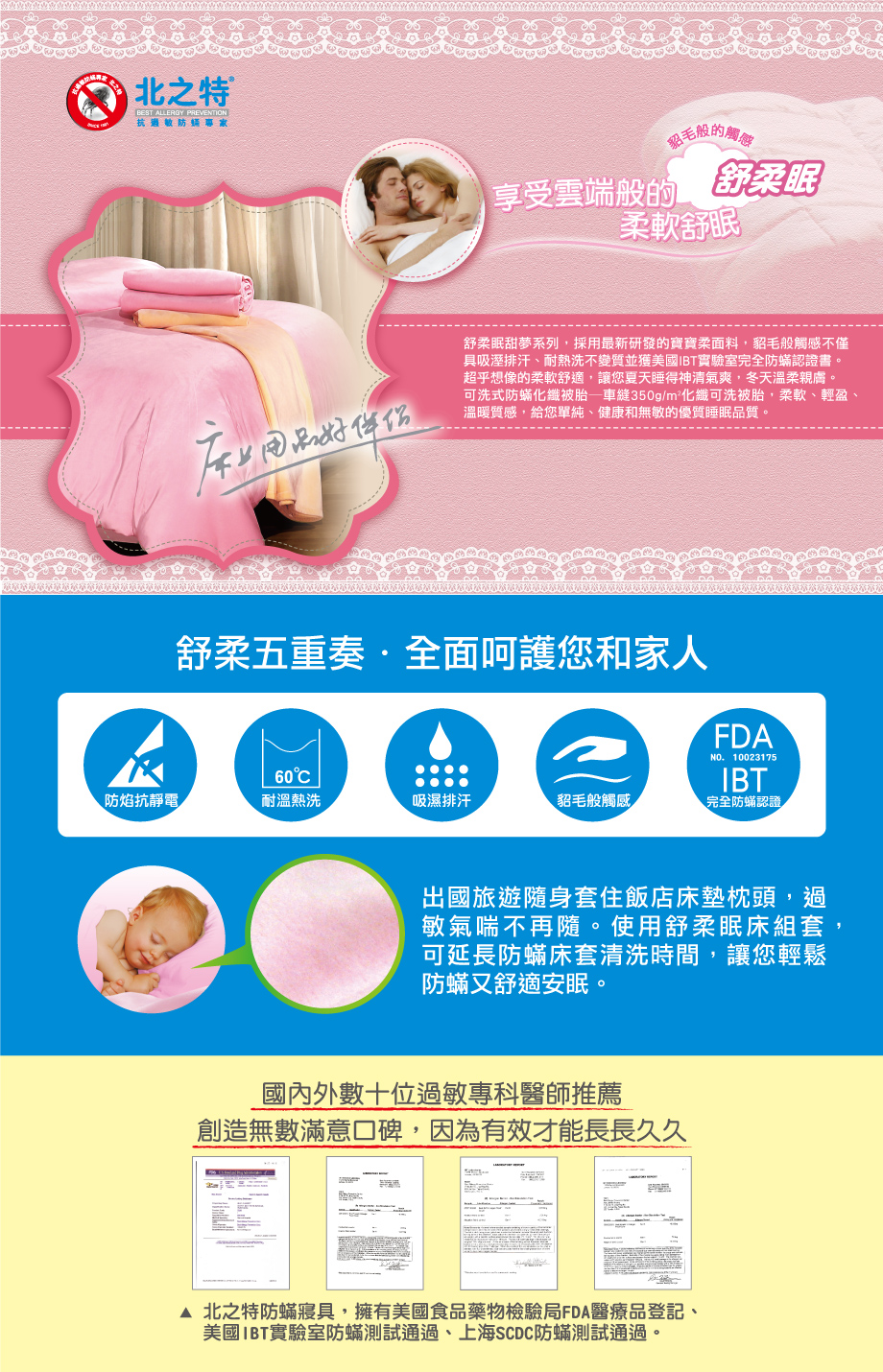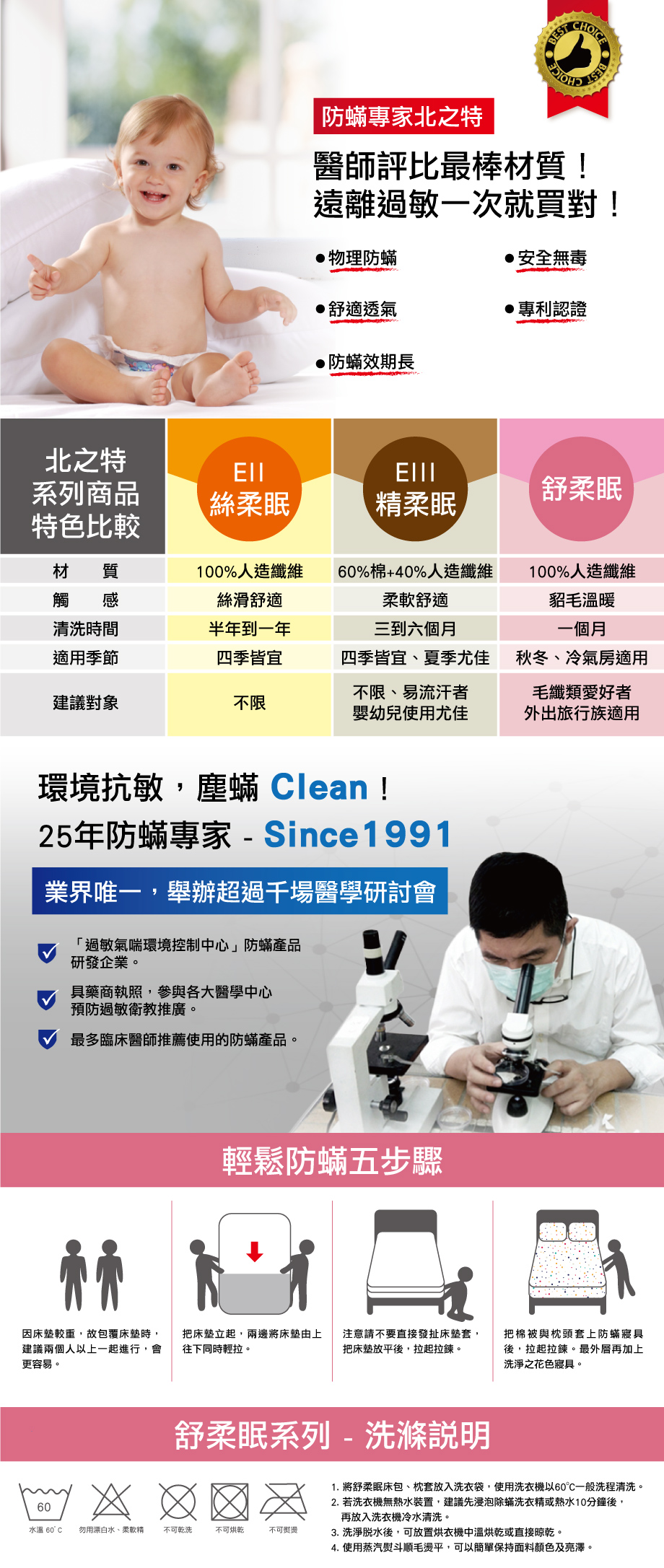<特惠價不挑色,顏色隨機出貨>



|
|
|
||
|
|
|
||
The house dust mite (sometimes referred to by allergists as HDM) is a cosmopolitan guest in human habitation. Dust mites feed on organic detritus such as flakes of shed human skin and flourish in the stable environment of dwellings. House dust mites are a common cause of asthma and allergic symptoms worldwide. The mite's gut contains potent digestive enzymes (notably proteases) that persist in their feces and are major inducers of allergic reactions such as wheezing. The mite's exoskeleton can also contribute to allergic reactions. The European house dust mite (Dermatophagoides pteronyssinus) and the American house dust mite (Dermatophagoides farinae) are two different species, but are not necessarily confined to Europe or North America; a third species Euroglyphus maynei also occurs widely
Asthma and allergies
Allergens produced by house dust mites are among the most common triggers of asthma. There are at least 15 mite allergens which are subdivided into groups. Group 1 and 2 allergens are the most problematic. Group 1 consists of proteins with a catalytic activity, for example Der p 1 (Dermatophagoides pteronyssinus group 1) allergen is a cysteine protease, as is its American counterpart Der f 1 (Dermatophagoides farinae group 1). Group 2 are proteins important for the mite. Proteins from the other groups affect only few patients. Studies have shown the mean attributable fraction of adult asthma due to atopic sensitization was 30% and 18% for sensitization to dust mites.[5] Taken into consideration this could mean as many as 1.2 billion people could have some form of chronic sensitization to dust mites.
How to prevent the dust mite allergy:
Step 1 Encase your bed
Encasing your bed is the single most important step in controlling your exposure to indoor allergens at home. You spend up to 8 hours a night in your bed, so the bed is the best and most physician-recommended place to start. Mattresses, pillows and comforters provide a thriving environment for dust mites. There are up to 1 million dust mites living in any bed, waiting to feast off your dead skin cells, and causing you allergy symptoms with the fecal matter they leave behind. ICK!
Best APC Encasing CoversBest Allergen Proof Covers-Overview Bed Care
Elegance Allergy Proof Cover – Comfort and Protection - By using only a single
layer of tightly woven, 60% cotton and 40% polyester microfiber fabric, this
lightweight cover blocks allergens but breathes freely to help you avoid
allergy triggers through the night. Constructed with a full-length zipper and
reinforced seams.
Best APC Encasing Covers Including
1. Mttress Cover
2. Comforter Cover
3. Pillow Cover